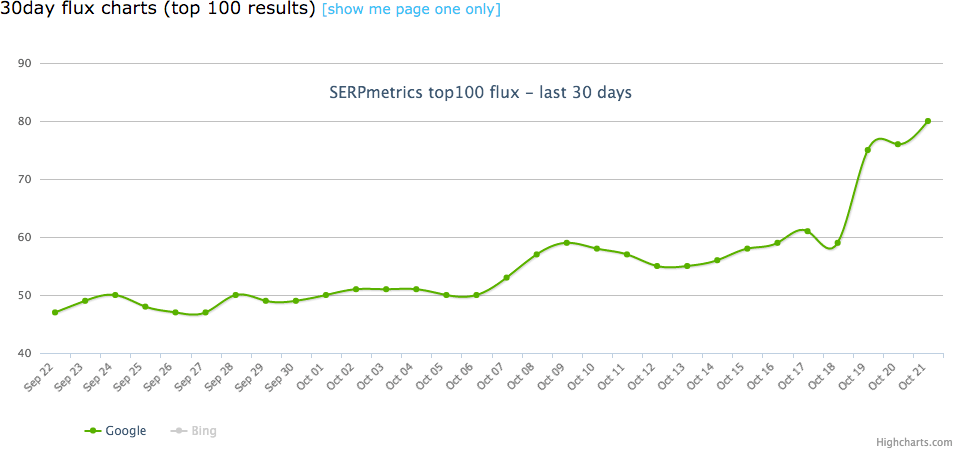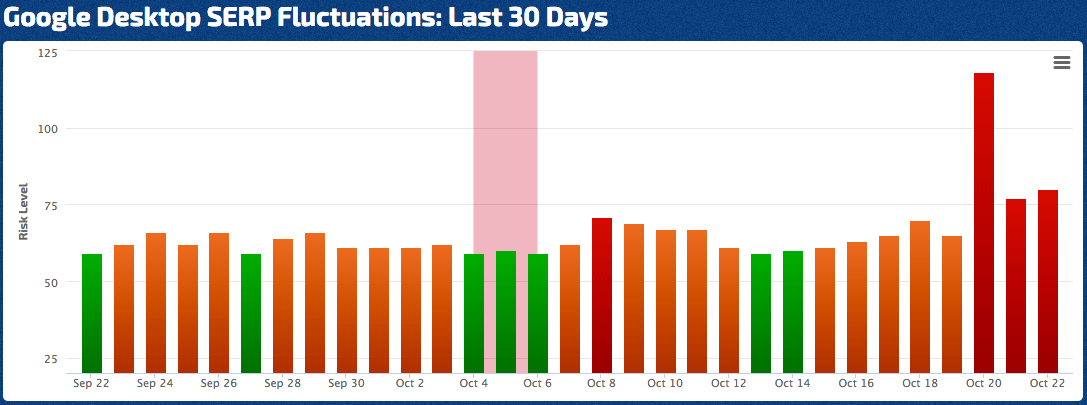The Overlooked Power of Paid Search for Manufacturers
Read Storyby RefractROI
The SEO industry is a strange place to make a living, since drastic changes can happen at the drop of the hat. Flexibility and creativity are essential qualities that every member of an SEO team should have if the reseller is to survive. But even the quickest thinker in the world needs to have some type of warning of an impending update before they can act. This is not the case with the latest set of changes that many webmasters are noticing with their rankings.
The story begins with the latest Google Panda update/data refresh that the entire SEO world has been waiting 10 months to come. But, unlike every other update that came before it, Panda 4.2 didn’t have any ground shifting changes – in fact, there were barely any changes at all.
Panda 4.2 was what many Google representatives called a “slow rollout”. Instead of establishing all the changes in one day and cause chaos across the SEO world, the modifications will apply throughout the coming weeks and months. We already talked about the positive and negative effects this type of rollout will have on resellers around the world in an earlier blog post.
One of the points that we made was that webmasters can almost never be sure whether any changes they see is because of Panda 4.2 or organic ranking shifts. This is exactly what’s happening right now, as several resellers and webmasters are recording strange changes in the ranking of the sites that they track.
These changes were most evident during October 14th-15th and October 20-21st. There have been records and reports of changes in rankings from as early as the 8th, but these were the days wherein everyone saw the most significant changes.

Several sources have already queried Google regarding the changes people are seeing, and have yet to post any official comment on the matter. Scratch that, they have responded to one of the questions through Twitter, though it’s not much help when it comes to getting answers.
Deciphering whether the changes are Panda related already looks like a confusing situation that a webmaster needs to unlock, but that’s actually the simple part.
One of the most common questions our webmasters get asked when we present the data to our clients is “If the changes happened throughout October, why are the dates separate?” This is because we’re pretty sure that only one of the data changes is because of Panda 4.2.
SEO companies and forums were lighting up with chatter regarding the nature of these shifts. The industry has labelled both of these shifts as the Zombie update, which no one should confuse with the Phantom update that happened a few months ago.
The phantom update acted like a poltergeist, trashing everyone’s rankings out of nowhere before leaving just as abruptly with little explanation or mention ever again. The zombie is just like its namesake, no one’s quite sure where it came from or what it’s going to do, but it plods on with a predictable trend and pattern.
Boards have talked about possible explanations, conspiracy theories, and almost every kind justification that could shed light on the situation. The discussions took a few days, but there were several good reasons that would lead us to believe that the initial ranking changes were because of Panda 4.2. The first of them being the proximity of the changes to the official rollout of the data refresh.
The timeline checks out even if Google does say that the rollout might take months to be fully implemented. Think of it as the first few vibrations when starting your car – no real movement is happening yet, but at least you know something happens. The same reasoning applies to our opinion that the second set of changes probably isn’t related to the Panda update.
If we’ll refer back to the graph above, or check any tracking chart, you’ll notice that there’s a short period between the two spikes wherein the levels became calm and stable. It’s only until the giant spike on October 20 that any alarming changes actually occur. But why should anyone assume that the second spike isn’t related to Panda? If we don’t know when we’ll feel the changes of this Panda update, how can we be sure that every bump and shift isn’t related?
Let’s take a look at the different graphs that recorded this event:


Tools crawl data differently based on various factors, such as when they run, what they analyze, so on and so forth. Some variance is expected with some of the data, but almost all the graphs are uniform in one thing. After spiking for Oct. 20, they took a dive back to more normal levels a day after. This type of behavior is too erratic, especially for a “slow rollout”.
Only Google can say exactly what happened with the second spike, and they’re not sharing any information on the topic for the moment. We may get more clues as time goes on, but other than steady trends we see every day, there’s not much else webmasters can read into the data.
Analyzing data and interpreting it to clients is exhausting work, but it’s a rush that we live for. If you’re looking for an SEO company that enjoys seeking out the latest information regarding ranking changes in both news and data – you’ve come to the right place. Contact us today to get a better understanding of where your business stands in the digital realm, and we’ll work closely with you to improve it.
Hey there, anything we can assist with?